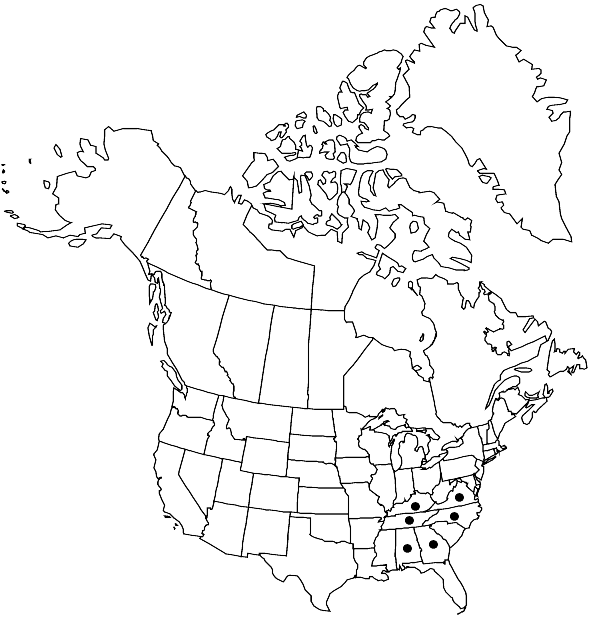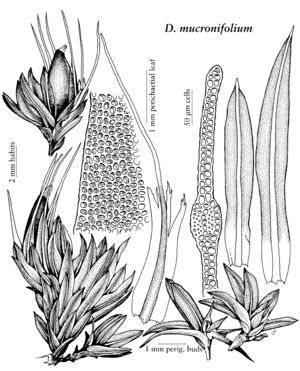Diphyscium mucronifolium
in F. Dozy and J. H. Molkenboer, Bryol. Jav. 1: 35, plate 26. 1855,.
Plants dark green to brownish, somewhat glossy, tightly affixed to substratum. Stems 0.5–1 mm, erect, strongly radiculose. Leaves 0.5–5 mm, and somewhat crisped when dry, apex acute, the most proximal leaves reduced, laminal cells smooth, margins entire. Perichaetial leaves with smooth awn, 9–12 mm, lamina at awn base lacerate but not membranaceous. Capsule narrowly ovoid, 2–3 mm, stomata absent, mature capsules sheathed in penicellate perichaetium, awns extending more than twice the length of the immersed capsule. Spores 9–12 µm.
Phenology: Sporophytes infrequent, capsules mature summer.
Habitat: Always on somewhat shaded humid rock surfaces, especially sandstones, conglomerate, and schist
Elevation: moderate elevations (900-1000 m)
Distribution

Ala., Ga., Ky., N.C., Tenn., Va., Asia (China), Asia (India), Asia (Japan), Asia (Philippines), Asia (Sri Lanka)
Discussion
Diphyscium mucronifolium is an example of an east Asian disjunctive species, and is found only as local, small populations.
